REPOSTED FROM THE ARCHIVES – Whenever I see an immigration news story, I think of this poignant series by Rosemary Sloot, still such a relevant work about the overwhelming consequences of immigrating, no matter the time frame or the family.
Rosemary Sloot was shocked when her mother confessed while dying that she had only one life regret. She wished she had never immigrated to Canada from the Netherlands after World War II. Her mother’s bombshell sent Sloot on a journey to redefine the family’s experience, resulting in her poignant immigration series. (Above: Final Farewell, May 1952)
Only a few cherished reminders to hold on to
Sloot’s mother spoke frequently to her children as they grew up in rural southern Ontario about the beautifully carved, solid oak wedding furniture left behind in Holland for the trip to Waterford, where Sloot was born. An entire household, acquired with such effort during and after World War II, was given away or abandoned – the handmade bedspreads, gifts, toys and heirlooms gone. Only a few meager belongings crossed the sea. (Above: Indonesian Tea Tin, acrylic & oil on handmade paper. Below: Waterford, Ontario, Summer of ’52)
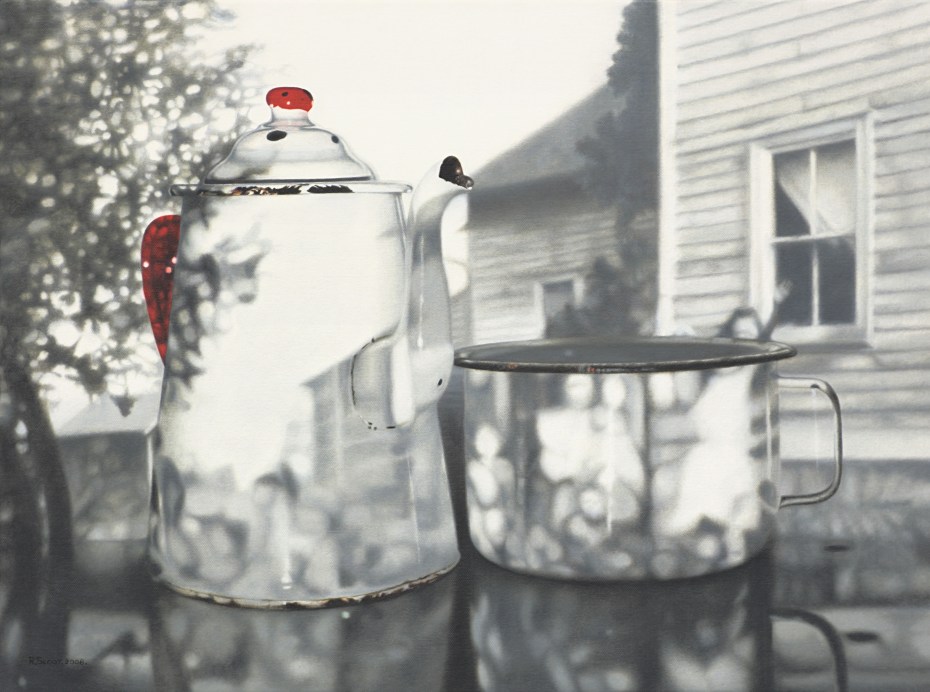
Sacrifice, persistence, hope and faith
Except for that oft-told story of belongings left behind, Sloot’s mother did not let on until she reached her death-bed that she regretted the move. Then, at 86, she confessed that the defining experience of her life “had simply been too difficult and far too much had been given up,” Sloot says.
Sloot, a well-known painter and teacher who began her career in Norfolk County, said her mother’s confession left her with her own “unexpected feeling of abandonment in a foreign land.” Her art changed trajectory as she re-defined the family’s story, shedding many tears and alienating relatives.
When my siblings would come into my studio they would get emotional. They found the paintings dark and painful. They thought I was on an unhealthy journey. Now that the project is complete, they are delighted.
Her works reference family records and photos to “speak to common universal themes of loss, uprootedness . . . sacrifice, persistence, hope and faith.” This exquisite image of her mother, interwoven with a white freesia popular in Holland then, depicts a carefree life given up. (Texel, Holland, 1936, below)
What was lost and what was gained
A key theme of the exhibit is loss against gain. Sloot’s eldest sister, named Cornelia, shortened to Lia, must be re-named to something more Canadian. Relatives who are already here insist on it.
-Your name is now Linda, chalk pastel on paper
A number of paintings superimpose letters or documents on images of home, to represent the years of cleaving to memories while becoming Canadians and building lives for children and grandchildren.
-Homesickness, oil on canvas
Many of the works are blurred or softened to make individuals less identifiable and to push the images back in time. The exhibition deals with the post-war emigration of the Dutch to Canada, but it also chronicles experiences common to many waves of immigrants, Sloot says.
Rosemary Sloot’s website, here
- Images courtesy of the artist, provided by Burlington Art Centre
Discover more from Canadian Art Junkie
Subscribe to get the latest posts sent to your email.

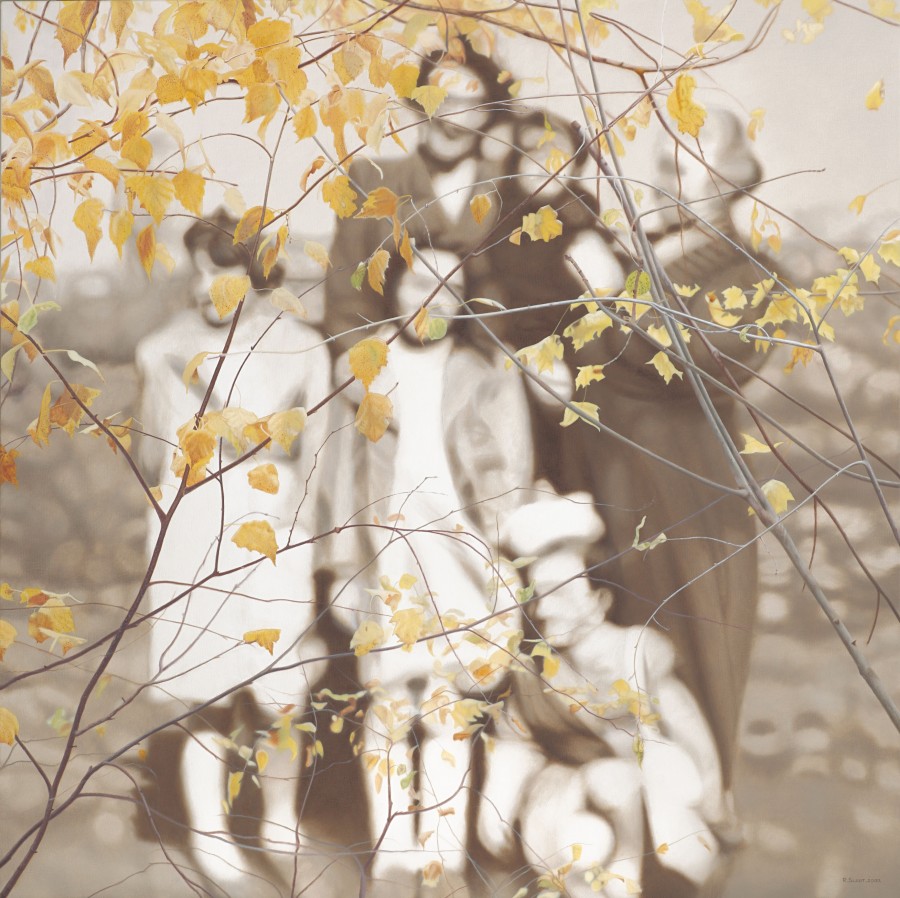

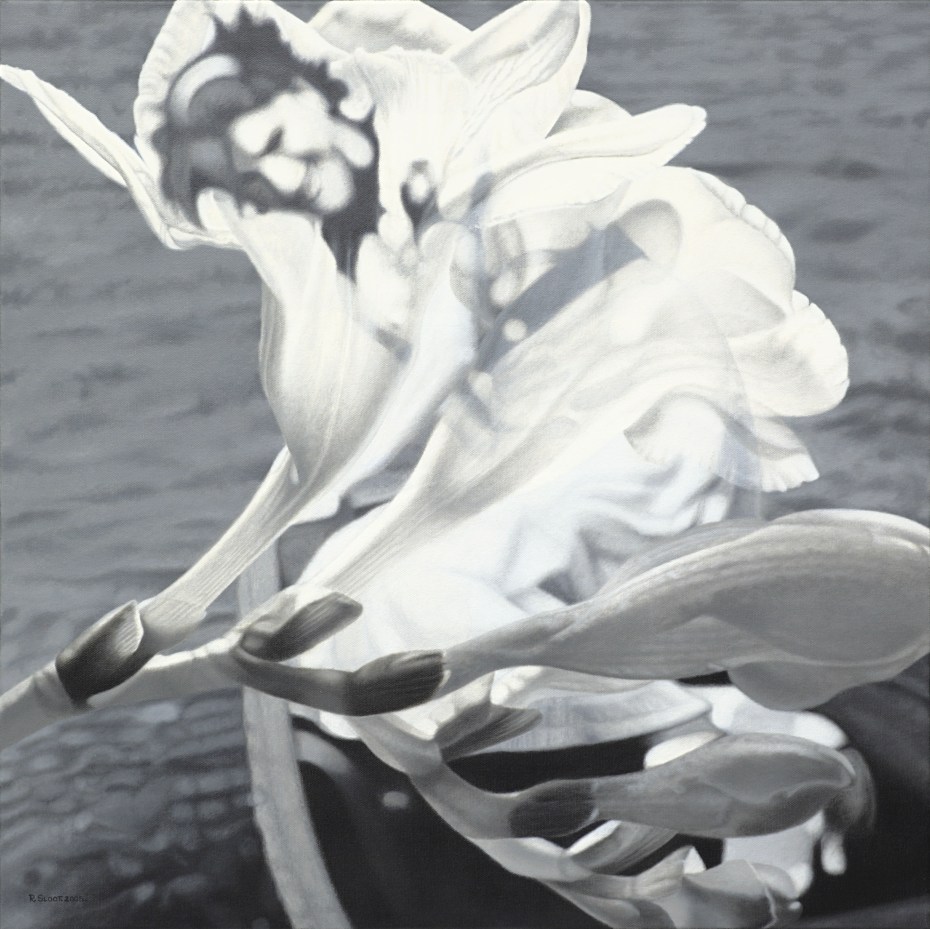
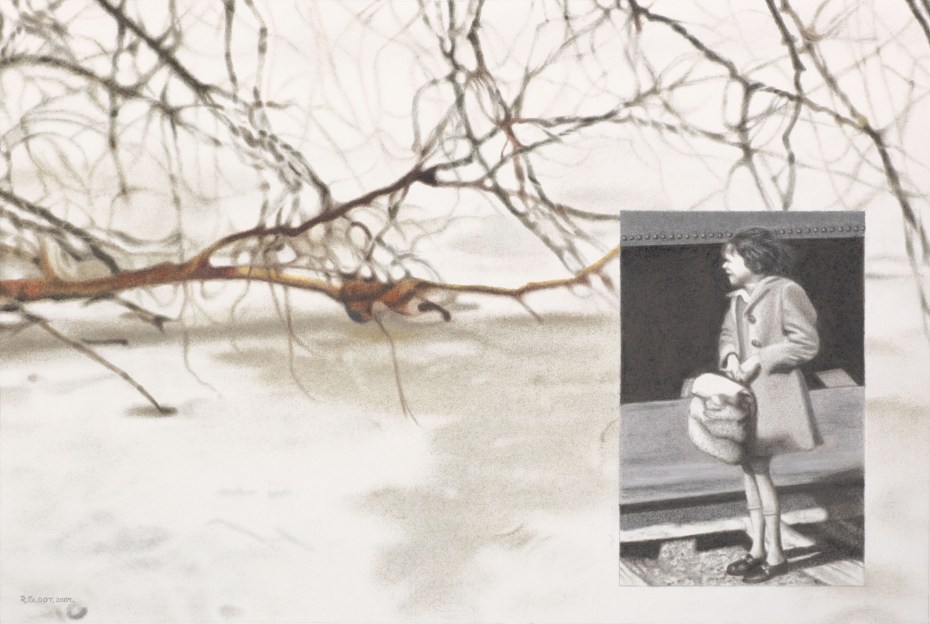

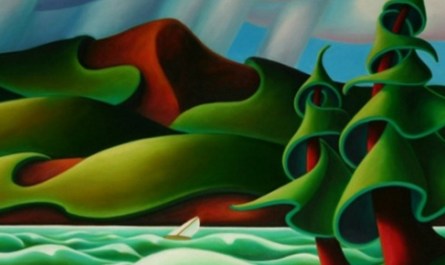
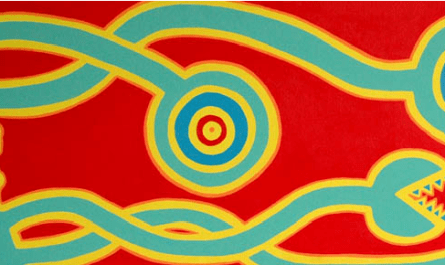
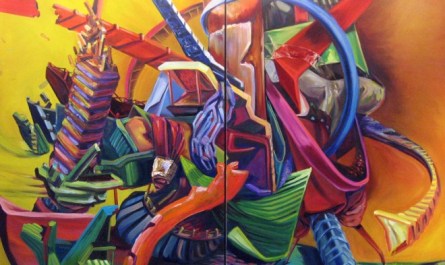
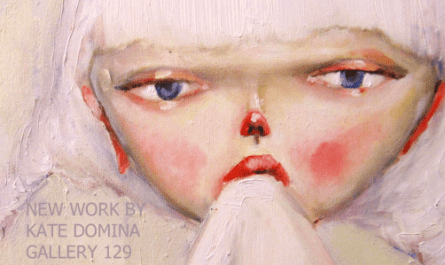


For me this shows and tells me how much she must have loved her husband to follow him to Canada and to try and start a new life
Rather interesting but sad that she never adapted Canada fully as her new country. I realize that leaving the bosom of an extended family and cherished belongings can be tough. One wonders if she got joy from her children who most likely have embraced Canada.
Sorry, my partner’s mother immigrated from Germany after WWII. She left behind a privileged middle class family but she was tired of trying to figure out her demanding relatives. Yes, she and her family came here poor but her experience was the opposite…she was able to carve a life with values that she wanted.
I also have parents who immigrated to Canada from mainland China in 1950’s. My parents have never returned to visit. They never wanted to…their life together is..here. It really has been even though it’s been especially tough on my mother. It helps since they came, other relatives immigrated to Canada.
We have a cottage in Norfolk I bought a painting from a gentlemen that buys frames and sells off the paintings. A painting I fell in love with has the name Linda Sloot 1964 on the bottom. Can anyone tell me any information about the siblings and if they were also artist- this particular painting is a oil painting of a fall scene not similar to Rosemary’s work. We love the painting and would love to view others.
How fascinating. I think the best thing for you to do is contact this artist, Rosemary Sloot. Given that the name of one of the paintings in the blog post above is “Your Name is Now Linda,” it’ may well be that you have something family related. Rosemary’ Sloot would know. Her email is public on her website. It’s rsloot@sympatico.ca. I’d love to know the outcome.
Having arrived in Barrie from Holland in 1954 my parents and 10 siblings ( 2 brothers were born here) our first year was pretty momentous. Rosemary’s work so touches that part of me that I try to forget. I love the reality of the work, I am deeply moved seeing letters in her Mother’s handwriting, being able to read Dutch they are so meaningful, and reflect a similarity of my Mothers writing at the time to relatives back in Holland never letting on how tough times were, since many of the relatives back home suggested to my parents they have their head read” before hauling the whole family to a foreign country, whose language they did not know.
My life has always been affected by immigrating, and the reality of coming here, at the age of 13.
I look forward to seeing Rosemary’s work, but with a bit of trepidation, which is alright
What a lovely vignette about your own family’s connection to this art. That’s so interesting about reading the letters in Dutch. I found her work very moving without even any connection to the subject. So I can understand how it touched you, having come here at the age of 13. Thank you so much for taking the time to convey these thoughts.
Wonder if her mother had returned to Netherlands to visit and stay for a long extended time to get a more realistic feel of the Netherlands. Immigration, especially to a country where the person must learn a completely different language is very difficult life change, particularily as an adult.
That’s an interesting perspective, about what the result would have been had the mother returned for a visit. She must have felt so confined here. Thanks for taking the time to share your thoughts.
An excerpt from my feature on the exhibition in DUTCH, the magazine:
“When I first saw Ms. Sloot’s beautifully detailed paintings, I was stunned by the familiarity of their narrative. And as I saw canvas after canvas a deep sense of melancholy came over me. The images and objects presented in intricate detail come from the Sloot family album and attic. And as I discovered during a long conversation with the artist, they often have intimately private backstories that the casual onlooker will never know.
Nevertheless we recognize the images instantly. The divide between old country and new, which is evoked in several of the works – just look at Final Farewell with the blurred family portrait behind the young Canadian maple leafs – must resonate with anyone who has made the leap between two countries. Or whose parents or grandparents have.”
Hi Tom – Thank you so much for the excerpt, which is both resonant and accurate. It’s beautifully written and also relevant to the origin of Rosemary Sloot’s personal artistic quest. I found the exhibit extremely moving, and exquisitely executed. I really appreciate you taking the time to share this, as it adds to my own understanding. And I’m sure that many visitors to this post will find it interesting as well.
Thanks so much for your kind comments! In due course we will publish the whole feature on-line, we will let you know when and where it’s available!
A deep and introspective post, it challenges us all to stop think about the baggage we all carry
That is so true. Lots of baggage we may be carrying silently, as this artist’s mother was.
so much heartbreak. The artwork looks wonderful
These works are really quite astonishing. Some of them are huge (in the 200cm x 200 cm range) and so beautiful. The photos do not capture the layers, or the technique, as well as what you can see up close. The whole exhibition is so moving. Thanks for your thoughts.
Really wish I could be there on Sunday to hear her speak about this and her art.
She will be an interesting speaker, based on the interview I did with her. And very thoughtful about the meaning and impact of her art.
When my grandparents came to America from Switzerland their family name was changed to Day. Go figure.
The name change affected so many many people, didn’t it? Part of that era of immigration, for certain. Thank you for the comment.
Reblogged this on unicornivore.